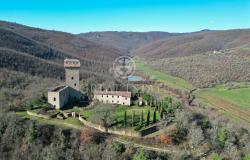 Italian villagers fighting to get an ancient chariot back from a top US museum are heading for Rome after Easter to ask Culture Minister Francesco Rutelli to show more interest in their case.
Italian villagers fighting to get an ancient chariot back from a top US museum are heading for Rome after Easter to ask Culture Minister Francesco Rutelli to show more interest in their case.
"We'll be demonstrating outside Rutelli's window. We're not pleased with the ministry's inertia," said the mayor of this aggrieved Umbrian village, Nando Durastanti.
"Rutelli has to realise that the chariot is a unique archaeological treasure, which was stolen," the feisty Durastanti said on Thursday.
"The chariot must return," stressed Durastanti, who has been leading the year-long fight against New York's Metropolitan Museum of Art.
Monteleone's villagers also plan to protest outside the US embassy in Rome, under a banner reading: "We want our chariot back!"
The demonstrations have been timed to coincide with the April 20 opening of the Met's renovated galleries, at which the Etruscan war chariot will be one of the star attractions.
Durastanti has already enlisted the support of a US mayor who is trying to put the case to the highest US Congress.
After a visit to Monteleone at the end of last month, Glen D. Gilmore, mayor of Hamilton, New Jersey, wrote a letter to two Senators from his state, Frank Lautenberg and Robert Menendez.
Gilmore said America should return the chariot "both as a goodwill gesture and also to help boost the local economy".
The Hamilton mayor was in the pretty Umbrian hill town with a delegation of Americans of Monteleone descent.
Durastanti said a voice in Congress might sway the Met, which has refused all pleas for the chariot.
The next stage of the villagers' campaign will come three days after the protests in Rome, when a book about the chariot will be presented in the nearby Umbrian capital, Perugia.
CONTROVERSIAL HISTORY.
Entitled La Biga Rapita (The Stolen Chariot), it chronicles the chariot's saga, from its probable origins to its controversial history over the last 100 years.
The Etruscan chariot, which is 2,600 years old, was unearthed in 1902 by a local farmer, who reportedly swapped it for two cows.
It ended up in Florence the following year, where it was sold to the Met, dismantled, and smuggled out of the country, allegedly with the help of the financier JP Morgan.
Thought to be the only Etruscan chariot ever found in one piece, it underwent a painstaking, seven-year restoration to take its place at the museum's revamped Greek and Roman Galleries.
Monteleone's 700 inhabitants say the chariot is rightfully theirs. They claim the farmer had no idea of its true value, while its purchasers knew exactly what they were buying.
Furthermore, they say the Met cannot prove its ownership and that the chariot was taken from Italy illegally, as government authorities did not approve its export.
A Monteleone-born lawyer who has lived in Atlanta for many years, Tito Mazzetta, has agreed to represent the village in its fight to get the chariot back.
He has written numerous letters to the Met's management and is considering bringing the case before a New York federal court.
But the Met says it has owned the chariot for 100 years, pointing out that any deadline for a legal claim of this kind would have lapsed long ago.
"It would be like asking France to give back the Mona Lisa," one museum spokesperson said.
The chariot is made of bronze inlaid with ivory. It features reliefs showing three episodes from the life of a warrior thought to be Achilles.
A woman, probably the Greek hero's mother Thetis, is holding his armour in the central panel. One of the side panels shows Achilles at battle, while in the other, he is depicted driving a winged chariot.
The vehicle, which is 1.3 metres high, was found with the remains of two humans inside. It also contained two Attic black-figure drinking cups, which helped date it to 630BC.
If Monteleone decides to take its claim to the courts, it faces an uphill struggle. First and foremost, it needs the Italian state to officially authorize the municipal and regional councils to act on its behalf - which the government has shown no inclination to do so far.
But the villagers are hopeful.
They point to the "absurdity" of an Etruscan chariot being housed among New York's skyscrapers.
"It would be like us opening a museum about Native Americans in Monteleone," one villager said.
Perhaps more promisingly, the Met has led the way among US museums in agreeing to return looted antiquities to Italy, signing a landmark deal with the government last year.
Despite this, the Italians still have more than 100 requests pending with the museum - and the chariot is not yet one of these.








